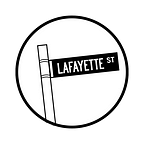The Yeezy emporium
Grammy award rapper and producer. Entrepreneur. Fashion designer and many more are the traits and some will call hobbies of Kanye West. After a few failed attempts at making a name for himself in the fashion world with the brand Pastelle in 2009 to the luxury womenswear venture, ‘Kanye West’ two years later, we recall that his first successful design line was the Air Yeezy collaboration with Nike from 2009 to 2014. The Nike Air Yeezys that dropped in 2009, 2012, and 2014 were, in every way, a manifestation of West’s desire to reach iconic Air Jordan status. But, while he emulated the Jordan brand in both name and design style, the success didn’t quite translate the way Kanye had envisioned.
West felt frustrated with the company, which he felt had treated him “like just another celebrity dabbler,” Forbes reported. Even more frustrating for West, he was unable to get the royalties that Nike reserved for its athletes. West told an audience in Nashville after a concert that he had wanted “as many Yeezys as there was LeBrons (the basketball player’s signature Nike shoe, which is widely available), and I wanted them to be at a good price, but that was not my choice”. Oddly, it would take Kanye relenting with his new partners for the Yeezy model to truly flourish. The creative and business implicated limitation that Nike imposed on Kanye West were some of the reasons why the collaboration between the artist and the sportswear giant from Oregon came to an end.
After leaving Nike, Adidas (that at the time was struggling to reach younger audiences and was third, revenue-wise in the US, behind Nike, and Under Armour) that reached Kanye West for him to sign a deal for his dedicated product line. Though West signed with Adidas in 2013, it was a change of management in 2016 that saw him close an unheard-of deal: a 15% royalty on wholesale. What’s more, he retained 100% ownership of the Yeezy brand. This deal, when compared with Michael Jordan’s Nike royalties — around 5%, per Forbes — makes it clear where Kanye’s ambitions of himself and his ventures were aimed. Even though West made clear that he wanted everyone to be wearing Yeezys just like a uniform, the empirical evidence was different. For the first few years that Yeezys 350 V1 were around, it was almost impossible to get them because of their limited quantities and the most sought after colorways like ‘Pirate Black’ were being resold for as high as 1,000 USD. The hype was real and for as long as there were only the 350 V1, Yeezys brought Kanye West and Adidas to the hype sneaker market. Things started to change slowly. West’s and Adidas’ partnership went beyond just shoes and went also into apparel. The YEEZY brand became some kind of luxury streetwear, maybe even the first streetwear line by a sportswear company, and slowly the Yeezy shoes started to become more available. More models, more colorways, more sizes, and more importantly, higher quantities. It seemed as if somehow Adidas released the first models to see if their audience was prepared for the shoes designed by West and once they were set in the market and they realized were profitable, they went and made millions of shoes. The business model has changed. Nowadays there is a new Yeezy colorway once every couple of weeks, new models are announced every now and then and they are very accessible to customers. More availability of product makes that the secondary market (the resell market) prices are more accessible to the average consumer and it shows. A couple of years ago it was rare to see someone wearing yeezys in the street. Now you know for sure that every time you leave your house you will catch someone wearing Kanye West’s signature shoes.
But still, Kanye West wants even more. He really wants to give affordable ‘fly’ clothes to the masses, and that’s why he went and signed a deal with the Gap. Yeezy’s design studio, under Mr. West’s creative direction, plans to create “modern, elevated basics for men, women, and kids at accessible price points. ”Mr. West’s “design vision” will extend to how the line will be showcased in Gap’s stores and online. They agreed to a 10-year deal starting this month, with the option to renew after five years”, according to a person familiar with the negotiations. At the five-year point, Gap is hoping that Yeezy Gap will be generating $1 billion in annual sales. For context, Gap’s brand brought in $4.6 billion in global revenue last year. Mr. West, who worked at a Gap in his teens as a sales assistant, has expressed deep interest in the brand for years, declaring in a 2015 interview that he would “like to be the Steve Jobs of the Gap” and once dreamed of being its head creative director. The Gap is the perfect platform for Kanye West to achieve his wildest dreams of creating affordable sustainable pieces dedicated to a mass audience.
Many call him crazy, but his most loyal fans call him a Visionaire. In my opinion, Kanye West is able to reach his long-desired dream, because even if people don’t realize it, his designs that maybe 6 years ago were somehow way too crazy for the mainstream, are now the stylistic mainstream when it comes to leisurewear. When it comes to his creative vision, it is very ambitious but carries an important message. Giving people the power to express themselves through clothes that more than clothes are pieces, and to bring the stylistic measures that for the last couple of years have been defining the ‘hype market’ to a much bigger scenario and to create a new normal.
